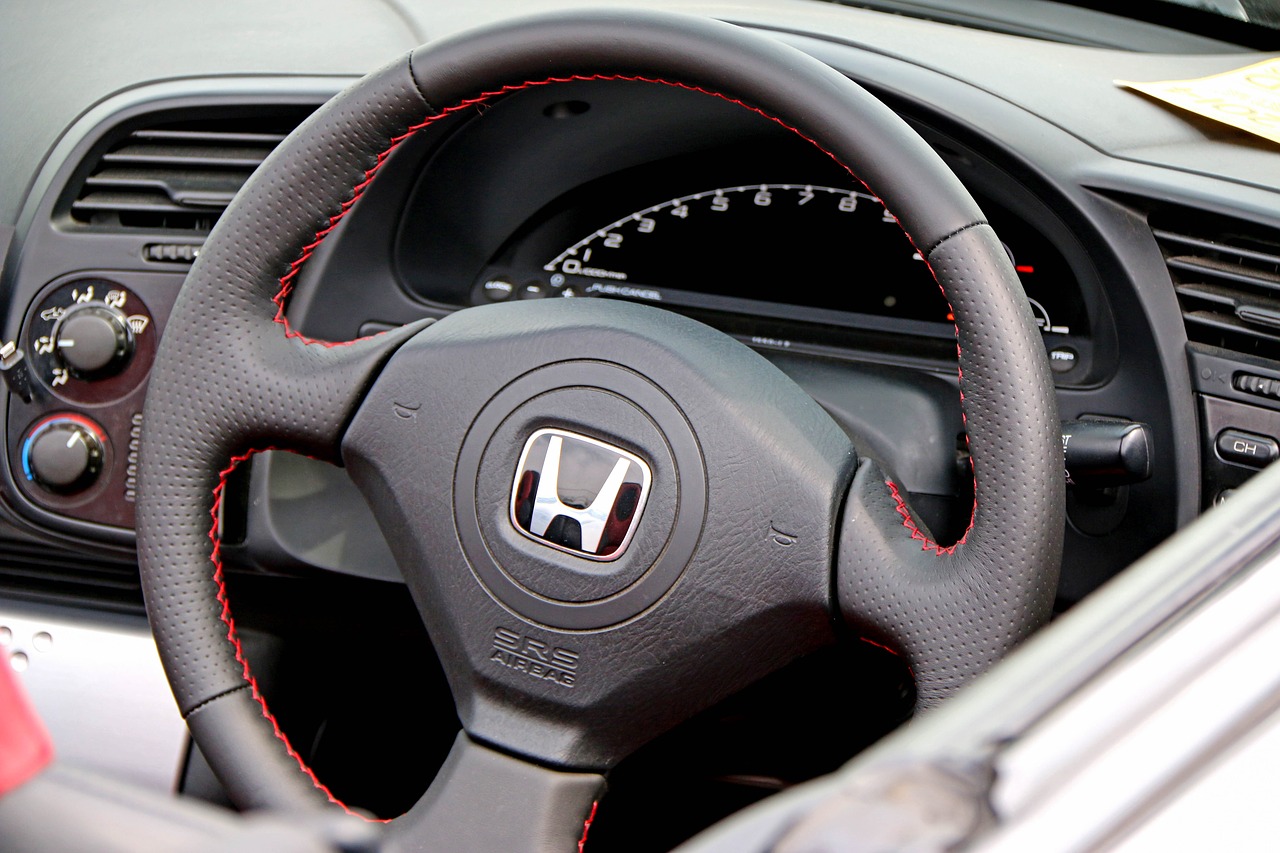With the Honda Accord’s history as one of the most popular sedans for the better part of the past 50 years , it’s hard to forget how it changed the car industry. Though its origins were humble, the Honda Accord reshaped what Americans expected from their family sedan
Honda first introduced the Accord in 1977. At the time, Honda had been selling cars in the US for just seven years and had already become the number-four import brand in America. The Civic was largely responsible for their success, but it was smaller than the competition. In 1972, Honda began working on its new, larger car.
The first-generation Accord appeared in late 1976 as a two-door hatchback with a 68-horsepower 1.6-liter CVCC engine. Performance was tepid—0-60-mph in 13.8 seconds—but critics immediately took notice of its precise steering, sharp handling, impressive fuel economy, and comfortable interior. It was available with a five-speed manual or a two-speed semi-automatic. Nifty innovations included service-interval reminders and warning lights that signaled blown-out light bulbs and not-closed doors. Our sister publication, MotorTrend, called it “certainly the best automotive buy we’ve seen in a long time.”
Demand for the Accord soon outstripped supply, with long waits for delivery and expensive dealer mark-ups added to its $3,995 price. Honda added the LX model with air conditioning and power steering (then a rarity in small imported cars) in 1978 and a bigger (1.8-liter, 72-hp) engine for 1979. This was also the first year for the Accord four-door sedan. In 1980, Honda added a three-speed fully automatic transmission and an SE model with leather and power windows.
The second-gen Accord came out in 1982. It grew slightly on the outside and a lot on the inside, and as good as the first-gen car was, the new ’82 was even sportier, more refined, and more efficient. In November of 1982, Honda began building Accords Stateside in Marysville, Ohio, where Accord production continues to this day. The Accord got a slight restyle and the 86-hp, 12-valve 1.8-liter Prelude engine in 1984, and in 1985 Honda added a 101-hp fuel-injected version of the 1.8 in the Accord SE-i.
The third-gen Accord, with its distinctive Prelude-inspired hidden-headlight styling, appeared for 1986, now even bigger and with 2.0-liter power, either carbureted or fuel-injected. The second-gen Accord’s ride and handling varied from year to year, not always for the better, and the 1986 models honed the nimble feel for which the Accord would become known. As before, the Accord was introduced as a two-door hatchback and a four-door sedan, with a two-door notchback joining the lineup in 1988. Built exclusively in Marysville, Ohio, the Accord Coupe was the first Japanese car to be built in the U.S. and exported back to Japan.
In 1990 there was yet another new Accord. Five inches longer than its predecessor, the fourth-generation Accord was officially a midsize car. The hidden headlamps and the hatchback were gone, the 16-valve 125-hp 2.2-liter engine was new, and the reworked suspension made the Accord even more enjoyable on twisty back roads. The new Accord locked horns with the venerable Toyota Camry and Ford’s popular Taurus, beating out the latter to become America’s best-selling car for 1990. In 1991, a wagon joined the coupe and sedan, along with a 140-hp SE model. The fourth-gen car was facelifted in 1992 and replaced in 1994.
The fifth-generation car had a rounder look, no doubt to help it compete with the Camry and the Taurus. The new Accord, returning in coupe, sedan, and wagon forms, was slightly wider and not as long, and its reworked 2.2-liter engine produced 130 or 145 horsepower depending on trim level. Honda added a 170-hp 2.7 liter V-6 for 1995, a marketing-driven move that met with mixed reviews. With a mandatory automatic transmission, performance wasn’t a huge improvement, and the extra weight in the nose threw off the handling. It seemed to fly in the face of Honda’s minimalist ethic, and was perhaps the first serious mis-step in the Accord’s history. Aside from a 1996 styling refresh, the fifth-gen Accord saw few changes.
The Accord was once again all new for 1998. Sedans were bigger and roomier with handsome if conservative styling. The coupe was a very different car with unique sheet metal and a sportier handling setup. The wagon was gone, replaced by the CR-V. A new 2.3-liter four-cylinder engine produced 135 or 140 hp, while the V-6 was a new 200-hp 3.0-liter that erased the sins of the old Accord V-6 with sparking performance and a lower price tag (though transmission problems would lead to a class-action lawsuit). Styling was refreshed for the 2001 model year.
The seventh-generation Accord rolled in for 2003, a larger car that differed significantly from the Accord sold in Europe and Japan (which was later imported as the Acura TSX). The new Accord was roomier, sportier, and a lot more powerful, with either a 160-hp 2.4-liter four-cylinder or a 240-hp 3.0-liter V-6. The coupe once again got unique sheetmetal, and offered the V-6 with a manual transmission. Honda launched the Accord Hybrid for 2005, pairing their Integrated Motor Assist system with the V-6 and puzzling the public. The 255-hp hybrid was a very quick car, but fuel economy was nowhere near that of the Prius. With fuel prices on the rise, it was a poor seller. The Accord got minor styling updates for 2006.
When the eighth-generation Accord debuted for 2008, it grew by four inches in length and three in width, and the EPA reclassified it as a full-size car. And yet despite more bulk and more powerful engines (a 2.4-liter producing 177 or 190 hp and a 268-hp 3.5-liter V-6), fuel economy improved over the seventh-gen cars. The coupe once again had its own look and offered a V-6/six-speed manual combo, and the hybrid was ditched. The new Accord was not only bigger, it was softer, and phrases like “Buick” and “people of a certain age” began to creep into Accord reviews.
The eighth-gen Accord also spawned a strange new sibling: The 2010 Accord Crosstour, an Accord-based four-door hatchback with SUV overtones. The car lost the Accord prefix for 2012, but it was a slow seller that was discontinued after 2015. The regular Accord received minor updates for 2011, but by 2012 it was starting to lose ground to new (or newly improved) competitors like Hyundai’s handsome new Sonata and Volkswagen’s enlarged Passat.
When the ninth-generation Accord arrived for 2013, Honda set out to right these wrongs. The new car was trimmer and smaller and once again classified as a mid-size. A switch to an all-strut suspension and electric power steering raised eyebrows—Accords had been using double-wishbones and hydraulic assist for years. The new 2.4-liter direct-injected four developed 185 hp (189 with sport exhaust) and the 3.5-liter was up to 278 hp. Four-cylinder cars offered a six-speed stick-shift or a CVT, while V-6s had a six-speed automatic. Handling was improved but steering was better on four-cylinder cars (which had a rack-mounted assist motor) than V-6s (with a column-mount motor).
The Accord Hybrid reappeared for 2014 in standard and plug-in forms, though the latter only lasted two model years. Honda used a new hybrid system which delivered much better fuel economy than Honda’s first (2005) effort. The Accord lineup was refreshed and restyled for 2016.
In 2018, Honda introduced the tenth-generation Accord, this time only as a sedan. Power now came from a choice of turbocharged four-cylinder engines, either a 192-hp 1.5-liter or a 252-hp 2.0-liter turbo. A manual transmission was on offer, and automatic 1.5s got a CVT while 2.0s got a 10-speed. The chassis tuning was intended to bring a return to the good old days, and indeed it did—this was the best-driving Accord in several generations. The Accord Hybrid model was slightly less fuel-efficient than the 2017 model, but its price also got a significant discount.
The tenth-generation Accord was refreshed and restyled for 2021, and Honda made the sad (but not unexpected) announcement that for the first time in its 45-year history, the Accord would not be available with a manual transmission.
Honda Accord Highlights
The Accord name was chosen because of its French overtones. In the mid-’70s, Japanese consumers in the home market developed an affinity for products with French names.
The 1977 Accord offered a two-speed Hondamatic semi-automatic transmission, which had no clutch pedal but required its two forward gears to be manually selected. It wasn’t until 1980 that the Accord got a proper automatic transmission.
Early Accords had the carburetor mounted over the exhaust manifold, which made warm starts a problem: Fuel heated by the manifold would boil out of the carburetor bowl and condense in the intake manifold. When the engine was cranked, the fuel would be sucked into the engine, making it difficult to start. One contemporary journalist referred to it as “self-flooding”.
The CVCC (Compound Vortex Controlled Combustion) engine used in the 1977-83 Accord was notable for meeting U.S. emissions standards without the need for a catalytic converter or EGR valve.
Every generation of the Accord, from the first to the tenth, has been offered with a manual transmission. However, Honda announced that the 2021 models would no longer be available with a stick-shift.
Honda Accord Buying Tips
Looking for an Accord as a collector car? Good news, you probably won’t have many other buyers competing for that pristine first-generation car. Collector interest has largely centered around the high-performance Civic models, but that’s not to say the Accord deserves no love—after all, it’s one of the vehicles that helped to fundamentally reshape what American buyers wanted in their cars.
The good news is that Accords are built to last, and aside from a few known quality glitches (for example, troublesome transmissions on sixth-gen V-6 cars) they are exceptionally reliable and easy to find parts for. First-generation cars are among the most interesting, but their CVCC engines don’t always start and run well.
Hatchbacks, coupes, and sporty trims are among the most interesting from an aesthetic and historical perspective. Third-generation cars are nifty for their flip-up headlights and driving experience—they really helped to define the classic Honda feel. And if you’re looking for a low-profile sports car, it’s hard to do better than a sixth- or seventh-generation Honda Accord coupe with the V-6 and manual transmission combo.
Honda Accord FAQ
What year is the best Honda Accord?
Many say that the third-generation Accord (1986-1989) is the best for Honda purists, but most buyers are looking for something a little newer. We think the tenth-generation Accord (2018-2021) is the best we’ve seen in a while, but an argument can be made for the seventh-gen (2003-2007) cars as well. The eight-gen (2008-2012) sedans were big and soft, but the coupe of that vintage is still an impressive performance car.
Is the Honda Accord a good car?
Absolutely. Honda Accords are roomy and reliable, and with the possible exception of the 2008-2012 sedans, they are exceptionally good cars to drive.
When did Honda stop making the Accord?
Honda has not stopped making the Accord. The first Accord came to the United States for the 1976 model year, and Honda has had the car in continuous production ever since.
Which is better, Camry or Accord?
In years past, the Camry has been a better choice for comfort while the Accord was a better choice for a sporty drive. Toyota has made great improvements to the latest generation of the Camry, and it’s now a shockingly good car to drive—as good as, and perhaps even better than, the Accord. Bottom line is that you can’t go wrong with either.
View original: The Honda Accord: History, Generations, Specifications



